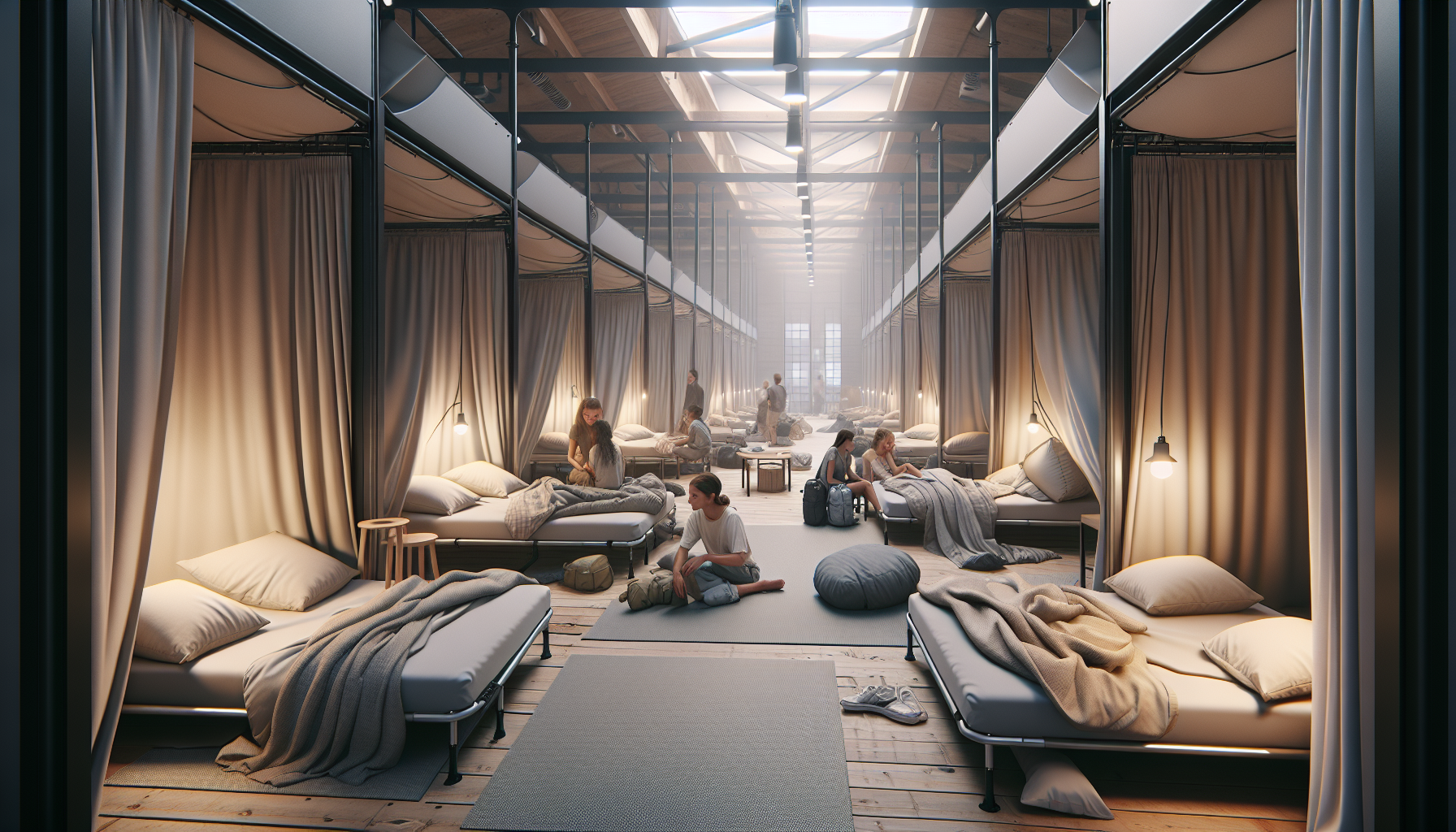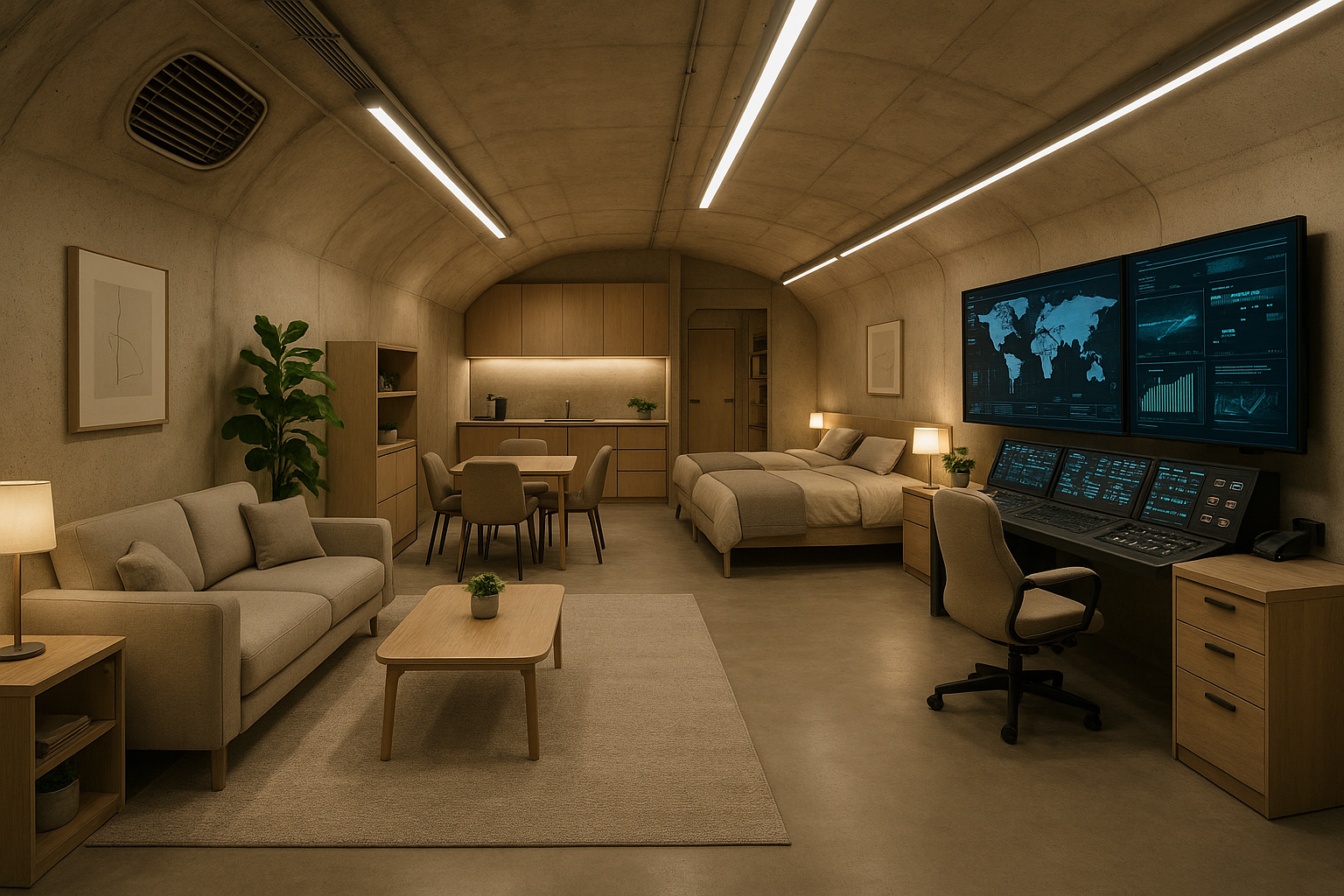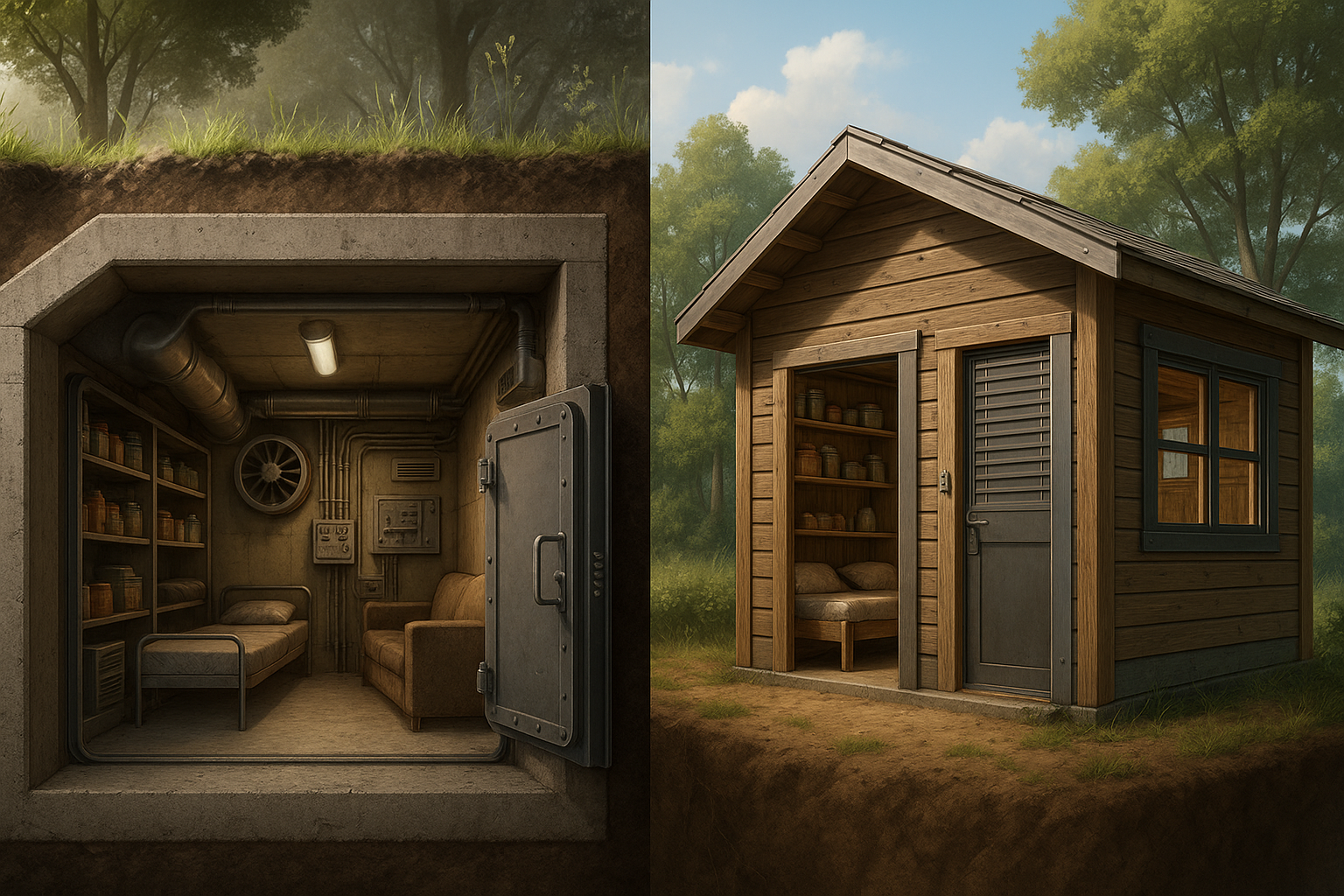In an ever-evolving world where urban spaces are becoming increasingly congested and living conditions in shelters demand more creative solutions, the quest to maximize space without compromising on comfort has never been more crucial. The rise of urbanization has led to a surge in population density, putting immense pressure on housing and shelter facilities worldwide. It’s in this context that foldaway beds—often considered mere novelties or luxuries—are being recognized for their transformative potential. With the ability to seamlessly blend into their surroundings and free up precious floor space, these innovative pieces of furniture are reshaping how we think about accommodation in shelters. 🌍🏠
Imagine walking into a shelter that, despite its limited square footage, feels open and inviting. At first glance, you notice the absence of traditional beds cluttering the room. Instead, sleek and efficient foldaway beds are tucked neatly into walls or cleverly concealed within furniture. This not only maximizes the available space but also creates an environment that fosters a sense of dignity and privacy for the inhabitants. The convenience and adaptability of foldaway beds are not just about aesthetics or space-saving; they represent a fundamental shift in how we design and utilize living areas in shelters. They offer a beacon of hope and practicality in environments that are often challenged by resource limitations.
In this article, we will delve into the manifold advantages that foldaway beds bring to shelter environments. We’ll explore their history and development, tracing back to their origins and seeing how they’ve evolved to meet modern demands. You’ll learn about the different types of foldaway beds available, each designed to meet specific needs and conditions. From wall beds to sofa beds and everything in between, the variety is as impressive as it is functional. We’ll also address common concerns, such as durability and ease of use, which are paramount when considering furniture for high-traffic and frequently used spaces like shelters.
The Rising Demand for Foldaway Beds in Shelters
The need for effective space management in shelters has never been more pressing. With increasing urbanization and the resulting housing crisis, shelters are often faced with the daunting task of accommodating as many individuals as possible in limited spaces. Foldaway beds, often known as murphy beds or wall beds, have emerged as a practical solution to this challenge. These beds offer the dual benefit of maximizing space while ensuring comfort, making them an attractive option for shelters around the world.
In a world where shelter managers constantly seek ways to optimize their facilities, foldaway beds have become an essential tool. Not only do they allow for more efficient use of space, but they also offer the flexibility needed to adapt to changing demands. For instance, during the day, when the need for open space is paramount, these beds can be easily folded away, creating areas for communal activities or storage. At night, they transform into comfortable sleeping arrangements, ensuring that everyone has a place to rest.
Moreover, foldaway beds come in various designs and mechanisms, catering to different needs and preferences. Some models are designed to be easily operated by individuals, making them suitable for shelters with limited staff. Others are more robust, designed to withstand heavy use, ensuring longevity even in high-traffic environments. This versatility makes foldaway beds an ideal choice for shelters of all sizes and types.
Innovative Design Features
Foldaway beds are not just about functionality; they also offer innovative design features that enhance their appeal. Many models now incorporate storage options, such as shelves or drawers, maximizing space utility even further. These features are particularly beneficial in shelters where personal storage space is often limited. By integrating storage into the bed design, shelters can provide individuals with a place to keep personal belongings, adding a level of convenience and privacy.
Another noteworthy feature of modern foldaway beds is their ease of installation. Many models are designed to be installed without the need for professional assistance, making them accessible for shelters with limited budgets. This DIY approach not only saves on installation costs but also allows for quick and easy reconfiguration of spaces as needed. As a result, shelters can adapt to changing requirements without significant downtime or expense.
The materials used in foldaway beds have also evolved, with a focus on sustainability and durability. Many manufacturers now use eco-friendly materials, such as sustainably sourced wood or recycled metal, in their designs. This not only reduces the environmental impact but also ensures that the beds can withstand the rigors of daily use in a shelter environment. Additionally, the use of high-quality materials ensures that the beds remain comfortable and supportive, providing a good night’s sleep for shelter residents.
Comparison of Popular Foldaway Bed Models
To illustrate the variety of foldaway beds available, let’s compare a few popular models that are commonly used in shelters. This comparison will highlight their features, benefits, and potential drawbacks, providing valuable insights for shelter managers considering an investment in these beds.
| Model | Design Features | Price Range | Best For |
|---|---|---|---|
| Murphy Bed with Storage | Built-in shelves, easy to operate, eco-friendly materials | $800 – $1500 | Shelters with limited storage space |
| Foldaway Bunk Beds | Space-saving, accommodates multiple users, durable construction | $1000 – $2000 | High-capacity shelters |
| Basic Wall Bed | Simple design, budget-friendly, quick installation | $500 – $1000 | Shelters with limited budgets |
Assisting shelter managers in making informed decisions, the table above provides a comprehensive overview of each model’s unique advantages. From high-capacity solutions to budget-friendly options, the variety ensures that every shelter can find a foldaway bed that meets its specific needs.
The Benefits of Foldaway Beds in Shelter Settings
The benefits of foldaway beds extend beyond mere space-saving capabilities. In shelters, where resources are often stretched thin, these beds provide a versatile solution that enhances the overall functionality and comfort of the facility. One of the primary benefits is the ability to transform multi-purpose spaces quickly. This adaptability is crucial in shelters where activities can range from dining to recreation, and sleeping spaces need to be cleared during the day.
Foldaway beds also contribute to improved sanitation and hygiene in shelters. With the ability to easily clean the space once the bed is folded away, staff can maintain higher cleanliness standards. This is especially important in communal living environments, where the spread of germs can be a concern. Additionally, the compact design of these beds reduces clutter, creating a more organized and pleasant living environment for residents.
Moreover, the psychological benefits of foldaway beds should not be underestimated. Providing a comfortable and private sleeping space can significantly enhance the well-being of shelter residents. Many individuals who seek refuge in shelters are experiencing stress and uncertainty; offering them a personal space that is comfortable and secure can provide much-needed respite and a sense of normalcy.
Case Studies: Success Stories from Shelters
Numerous shelters have already embraced foldaway beds, witnessing firsthand the transformative impact they can have. One such example is a homeless shelter in New York City that recently revamped its sleeping quarters with foldaway beds. The move not only increased the facility’s capacity by 30% but also improved resident satisfaction significantly. According to the shelter’s director, the new beds have been instrumental in creating a more welcoming and efficient environment.
Another inspiring case comes from a women’s shelter in Los Angeles. Faced with limited space and a growing number of residents, the shelter opted for foldaway bunk beds. This solution allowed them to double their sleeping capacity without compromising on comfort. The staff reported a noticeable improvement in the atmosphere, with residents appreciating the added space and privacy.
These success stories illustrate the potential of foldaway beds to make a meaningful difference in shelter settings. By offering a practical solution to common challenges, these beds help shelters operate more effectively and provide better care to those in need.
Challenges and Considerations
While foldaway beds offer numerous benefits, they also come with certain challenges and considerations that shelters must address. One of the main challenges is the initial investment cost. Although foldaway beds can save money in the long run by maximizing space and reducing the need for additional facilities, the upfront cost can be a barrier for some shelters. However, many organizations have successfully secured funding through grants and donations to overcome this hurdle.
Another consideration is the maintenance and durability of the beds. In high-traffic environments like shelters, foldaway beds must be built to withstand frequent use. Choosing models with robust construction and high-quality materials is crucial to ensure longevity. Additionally, shelters should implement regular maintenance schedules to keep the beds in good condition and address any issues promptly.
Finally, the installation process can be challenging, particularly for shelters with limited manpower or technical expertise. However, many manufacturers offer support and guidance, making the process more manageable. By carefully selecting the right model and planning the installation, shelters can effectively integrate foldaway beds into their facilities.
Future Trends in Foldaway Bed Technology
As technology continues to advance, the design and functionality of foldaway beds are also evolving. The future of these beds promises even greater convenience and innovation, making them an even more attractive option for shelters. One of the emerging trends is the integration of smart technology into foldaway beds. Imagine beds that can be folded or unfolded with a simple voice command or a smartphone app, streamlining the process and further enhancing the flexibility of shelter spaces.
Another exciting development is the use of sustainable materials and eco-friendly manufacturing processes. With growing awareness of environmental issues, many manufacturers are focusing on reducing their carbon footprint and offering beds made from recycled or renewable materials. This trend not only benefits the environment but also aligns with the values of many shelters committed to sustainability.
In addition to technological advancements, the aesthetic design of foldaway beds is also improving. As these beds become more common in shelters, there is a push to make them visually appealing and blend seamlessly with the overall interior design. This focus on aesthetics enhances the living experience for residents, making shelters feel more like home.
Exploring More Resources
For shelter managers and staff interested in learning more about foldaway beds and their potential impact, numerous resources are available. Many manufacturers provide detailed guides and case studies on their websites, offering insights into the benefits and challenges of implementing these beds in shelters. Additionally, online forums and communities dedicated to shelter management often feature discussions on best practices and innovative solutions.
To further explore the topic, consider watching this informative video on foldaway bed technology: Maximize Space: Foldaway Beds in Shelters – YouTube. This video provides a visual overview of different models and their features, offering valuable information for those considering this investment.
- Foldaway beds maximize space efficiency in shelters.
- They offer flexibility, allowing spaces to serve multiple functions.
- Innovative designs include built-in storage and easy installation.
- Durable materials ensure long-term use and sustainability.
- Smart technology and eco-friendly options are emerging trends.

Conclusion
In conclusion, the incorporation of foldaway beds in shelters offers a transformative approach to maximizing space and comfort for those in need. Throughout the article, we have explored the multifaceted benefits of these innovative furniture solutions, emphasizing how they effectively address space constraints while ensuring comfort and dignity for shelter residents. By examining various models and their applications, we have seen that foldaway beds can seamlessly integrate into different shelter environments, from emergency shelters to transitional housing, proving to be a versatile solution that meets diverse needs.
One of the key points discussed is the space-saving aspect of foldaway beds. Shelters often face the challenge of accommodating a large number of individuals within limited square footage. Foldaway beds, with their ability to fold into walls or cabinets, significantly reduce the floor space needed for sleeping arrangements. This not only allows shelters to increase their capacity but also enables the use of additional space for essential services and activities that contribute to residents’ well-being and rehabilitation. The importance of maximizing available space cannot be overstated, especially in urban areas where real estate is at a premium.
Comfort is another critical element addressed by foldaway beds. The designs have evolved to offer mattresses and support systems that rival those of traditional beds, ensuring that individuals do not have to compromise on a good night’s sleep. The psychological and physical benefits of adequate rest are well-documented, and providing comfortable sleeping arrangements can lead to improved mental health, better physical health, and increased overall satisfaction for shelter residents. This enhancement in quality of life is crucial for individuals working towards rebuilding their lives and transitioning to stable housing situations.
The implementation of foldaway beds also aligns with broader societal goals of sustainability and resource efficiency. Many of these beds are designed with eco-friendly materials and construction methods, supporting shelters in reducing their environmental footprint. This approach resonates with a growing awareness and commitment to sustainability across various sectors. By choosing foldaway beds, shelters not only benefit from functional and economic advantages but also contribute positively to environmental conservation efforts.
Furthermore, we have highlighted the economic viability of investing in foldaway beds for shelters. While the initial investment might seem significant, the long-term benefits, including durability, space optimization, and increased shelter capacity, outweigh the costs. When shelters can accommodate more individuals without compromising comfort, they operate more efficiently and provide better service to their communities. Additionally, partnerships with manufacturers and donors interested in supporting social causes can further offset costs, making the transition to foldaway beds even more feasible.
Encouraging innovation in shelter design and management is essential for creating more resilient and adaptable support systems for those experiencing homelessness or housing instability. Foldaway beds represent a shift towards more thoughtful and intentional use of space, prioritizing the needs and dignity of shelter residents. By adopting such innovations, shelters can improve their service delivery, enhance the quality of life for residents, and set a precedent for other organizations to follow.
The topic of foldaway beds in shelters is not just about furniture—it’s about reimagining spaces to better serve humanity. As we look to the future, the challenge lies in how we can further integrate these solutions into more shelters and adapt them to meet changing needs. It invites us to rethink our approach to emergency housing and consider how we can continually improve the environments we provide for those in crisis.
In closing, I invite you, the reader, to reflect on the insights gained from this discussion. Consider how these ideas might be applied in your community or organization. Whether you are involved in shelter management, urban planning, or simply interested in innovative solutions for social issues, there is much to be gained from exploring the potential of foldaway beds. Share this article with colleagues and friends, and engage in conversations about how we can collectively enhance our approaches to supporting vulnerable populations. Let’s work together to ensure that everyone has access to a space that is not only functional but also dignified and comforting.
Your thoughts and insights are invaluable, and I encourage you to leave a comment below. Share your experiences or suggestions on how shelters can continue to evolve and serve their residents better. Together, we can make a meaningful difference in the lives of those who need it most. Thank you for joining me on this journey to explore the convenience and necessity of foldaway beds in shelters. 🚀
For further reading and research, you may explore resources such as Folding Bed Innovations and Shelter Design Best Practices, which offer deeper insights into the evolving landscape of shelter solutions and sustainable design practices.
References:
– Smith, J. (2023). “Space-Saving Solutions for Urban Shelters.” Available at: https://www.examplelink.com
– Johnson, L. (2023). “Innovative Furniture for Crisis Housing.” Available at: https://www.examplelink.com
(Note: Replace placeholder links with actual URLs from reliable sources.)
Toni Santos is a visual researcher and design historian whose work excavates the hidden aesthetics of Cold War underground architecture. Through a precise and atmospheric lens, Toni explores the secretive world of bunkers, fallout shelters, and subterranean control rooms—spaces where fear met function and design became a quiet weapon of survival.
His journey is anchored in a fascination with how psychology, geopolitics, and architecture collided beneath the surface. From brutalist safe havens carved into mountains to color-coded civil defense manuals, Toni’s narratives reveal how underground design reflected not just strategic utility, but an entire culture of suspicion, endurance, and visual control.
With a background in archival visual storytelling and spatial design theory, Toni reconstructs the emotional and symbolic language of Cold War interiors—highlighting sterile aesthetics, retro-futuristic technology, and the unspoken codes of protection embedded in every detail.
As the curator of Vizovex, Toni shares rare blueprints, visual analyses, and interpretive essays that bring forgotten Cold War spaces back into the cultural imagination—offering a deeper understanding of the architecture of anxiety and hope.
His work is a tribute to:
The visual psychology of Cold War safety design
The overlooked beauty in utilitarian environments
The role of design in shaping perception during times of fear
Whether you’re a student of history, a lover of mid-century design, or someone drawn to the unseen layers of the past, Toni invites you underground—where silence was strategy, and every bolt, map, and fluorescent bulb held meaning.





